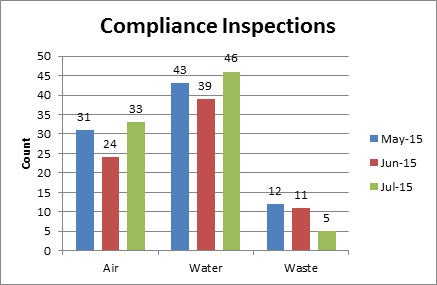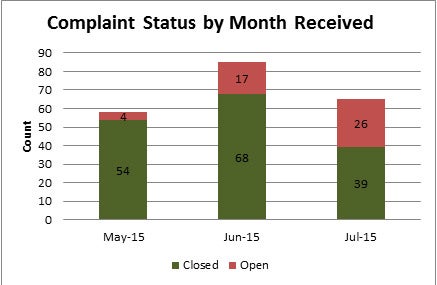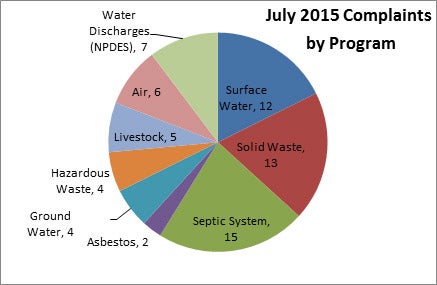July 2015 Metrics Report




Following is a description of specific issues NDEQ has been addressing in July:
Emerging Risks / Issues:
- The Department is pursuing remediation at several sites across the state where historic operations of manufactured gas plants have resulted in hydrocarbon contamination of groundwater. The former manufactured gas plants (FMGP) used coal as a feedstock to produce coal gas. The coal gas was used to light street lamps, heat buildings and various other energy uses. The FMGPs stopped operating in the late 1930s. There are 37 confirmed FMGP sites in Nebraska and remediation is on-going, or planned, at nine of the sites. The Department is assessing all options for the most current FMGP site in an effort to avoid a listing on the National Priorities List. The Department’s Voluntary Cleanup Program may offer a viable alternative.
- EPA has finalized the amount of funds NDEQ will lose as a result of the federal rescission. The Department will not receive $159,000 dollars that were allocated to us. The shortfall will be made up by reducing operational costs; overall staffing will not be impacted.
Accomplishments
- Revisions to Title 129 – Nebraska Air Quality Regulations were approved by the Governor’s Office and became effective on July 6, 2015. The primary objective of the changes to the regulations is to improve the construction permit process through providing the authority to issue general construction permits for certain source categories. The Air Program has five general construction permit categories drafted undergoing internal agency review. The five categories include: emergency engines, incinerators, concrete batch plants, rock crushing operations, and asphalt plants. Additional source categories will be added over the coming months. These revisions to Title 129 will significantly streamline the construction permitting process.
- NDEQ continues to work with the Department of Agriculture in addressing issues associated with the Avian Influenza incident in Northeast Nebraska. Department staff visited the affected sites with facility representatives. Issues discussed included burn permits, disposal of lagoon water and most significantly the disposition of the composted material. Additionally, the Waste Management Division arranged a photo fly-over of the sites. The photos will be useful in demonstrating how facilities should be set up if future Avian Influenza incidents occur.
Misc. Items of Note:
- Department staff have met with several other agencies over the last month including: the Air Quality Division met with the Nebraska Energy Office to discuss energy codes; the Field Services and Assistance Division met with the Department of Aeronautics to discuss the storage of chemicals at airports; and Emergency Response staff met with a number of state agencies – the Patrol, Nebraska Emergency Management Agency, Department of Roads, Department of Health and Human Services to discuss capabilities associated with preparedness related to a nuclear and radiological detection capabilities.
- NDEQ samples the state’s surface waters to gather data on the quality of the water. In the summer emphasis is placed on toxins associated with blue-green algae blooms and public beaches where swimming is common. The beaches (approximately 50) are sampled weekly for toxic algae. The results and alerts are reported on NDEQ’s web site, so the public can decide if their weekend plans need to be changed. To date we have only had to issue two health alerts for unacceptable levels of toxins associated with the algae. This is considerably lower than previous years.